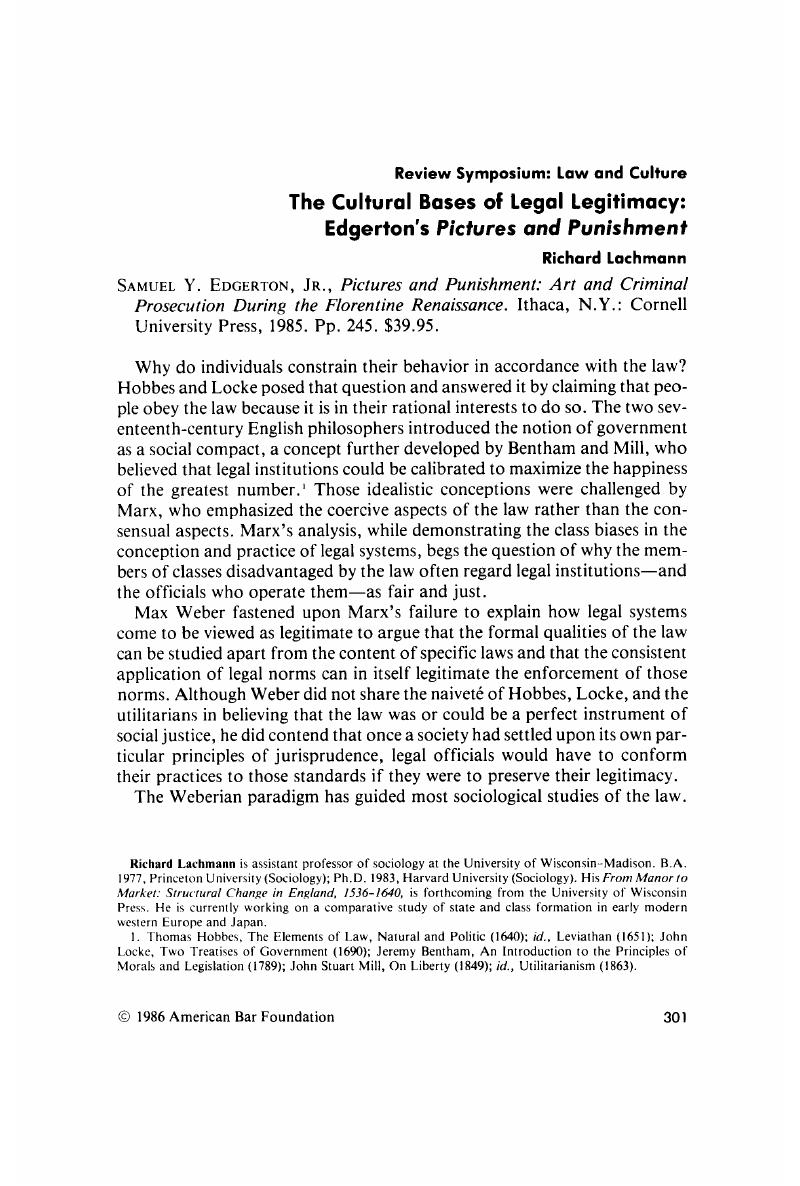Article contents
The Cultural Bases of Legal Legitimacy: Edgerton's Pictures and Punishment
Published online by Cambridge University Press: 20 November 2018
Abstract

- Type
- Review Symposium: Law and Culture
- Information
- Copyright
- Copyright © American Bar Foundation, 1986
References
1 Hobbes, Thomas, The Elements of Law, Natural and Politic (1640); id., Leviathan (1651); John Locke, Two Treatises of Government (1690); Jeremy Bentham, An Introduction to the Principles of Morals and Legislation (1789); John Stuart Mill, On Liberty (1849); id., Utilitarianism (1863).Google Scholar
2 Douglas, Hay, Property, Authority, and the Criminal Law, in E. P. Thompson et al., Albion's Fatal Tree 17–63 (New York: Pantheon Books, 1976).Google Scholar
3 Stuart Hallet al., Policing the Crisis: Mugging, the State, and Law and Order (New York: Holmes & Meier, 1978).Google Scholar
4 Weber, Max, The Sociology of Law, in id., Economy and Society: An Outline of Interpretive Sociology, ed. Guenther Roth& Claus Wittich; trans. Ephraim Fischoff et al. (Berkeley: University of California Press, 1978).Google Scholar
5 Id. at 641–51, 952–54.Google Scholar
6 Id. at 759.Google Scholar
7 Id. at 759–60.Google Scholar
8 Id. at 811; see also 882–83.Google Scholar
9 Also Daniel Waley, The Italian City-Republics 66–73 (London: Weidenfeld & Nicolson, 1969).Google Scholar
10 Samuel Kline Conn, Jr., The Laboring Classes in Renaissance Florence (New York: Academic Press, 1980).Google Scholar
11 Hay, supra note 2, at 29.Google Scholar
12 Id. at 33.Google Scholar
13 Id. at 43.Google Scholar
14 Id. at 52.Google Scholar
15 Id. at 55.Google Scholar
16 Langbein, John H., Albion's Fatal Flaws, in Past & Present, No. 98, at 96, 101. (1983).CrossRefGoogle Scholar
17 Id. at 101.Google Scholar
18 Id. at 108.Google Scholar
19 E. P. Thompson, Whigs and Hunters: The Origin of the Black Act 269 and passim (New York: Pantheon Books, 1975).Google Scholar
20 Hall, supra note 3.Google Scholar
21 Id. at viii.Google Scholar
22 Id. at 218–323.Google Scholar
- 1
- Cited by


